Red Salamander
- March 15, 2024
- 0 comment
Red Salamander (Pseudotriton ruber) is a fascinating amphibian that captivates the attention of herpetologists, nature enthusiasts, and conservationists alike. Native to the eastern United States, this species thrives in moist, forested areas, embodying the rich biodiversity of its habitat. This article aims to explore the Red Salamander’s biology, habitat, behavior, and conservation status, shedding light on its role in our ecosystems and the importance of its preservation.
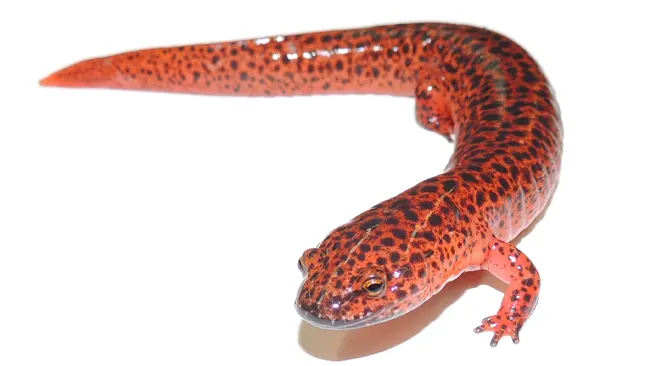
| Category | Details |
|---|---|
| Scientific Name | Pseudotriton ruber |
| Common Names | Red Salamander |
| Classification | Kingdom: Animalia, Phylum: Chordata, Class: Amphibia, Order: Urodela, Family: Plethodontidae |
| Size | Typically 4 to 6 inches in length |
| Weight | Varies with size, generally light due to small size |
| Lifespan | Generally 10 to 15 years in the wild, potentially longer in captivity |
| Habitat | Moist, forested areas near cool, clear, spring-fed streams and brooks |
| Distribution | Eastern United States, from New York to Alabama along the Appalachian Mountains |
| Diet | Carnivorous, feeding on insects, spiders, and worms |
| Behavior | Primarily solitary and nocturnal. Ambush predators that wait for prey to come within reach |
| Reproduction | Lays eggs in hidden, underwater locations in late autumn or early winter. Displays parental care |
| Conservation Status | Least Concern, but sensitive to habitat destruction, pollution, and climate change |
| Conservation Efforts | Habitat protection, pollution control, and promoting sustainable land use practices |
| Cultural Significance | Limited, mainly of interest to herpetologists, nature enthusiasts, and for educational purposes in understanding amphibian biodiversity and conservation |
| Challenges | Maintaining clean, unpolluted water sources and habitats, combating habitat destruction, and adapting to climate change are significant challenges |
Appearance
Coloration
The Red Salamander showcases a vivid red or reddish-orange color that covers most of its body. This striking coloration varies among individuals, with some exhibiting more intense shades than others. The vibrant hue serves as a distinctive feature, setting it apart from other salamander species.

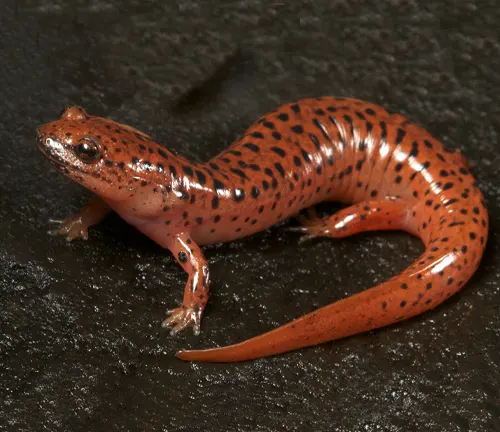
Spots
Their bodies are adorned with irregular black spots that stretch from the head to the tail. These spots differ in size and pattern across individuals, adding to each salamander’s uniqueness. The spotted pattern contributes to their camouflage in the moist, leaf-littered environments they inhabit.
Skin Texture
The skin of the Red Salamander is smooth and perpetually moist, a typical amphibian trait that aids in respiration and hydration. This moist skin texture is crucial for their cutaneous respiration, allowing them to absorb oxygen directly from their environment. The slick, wet appearance reflects their affinity for damp habitats.
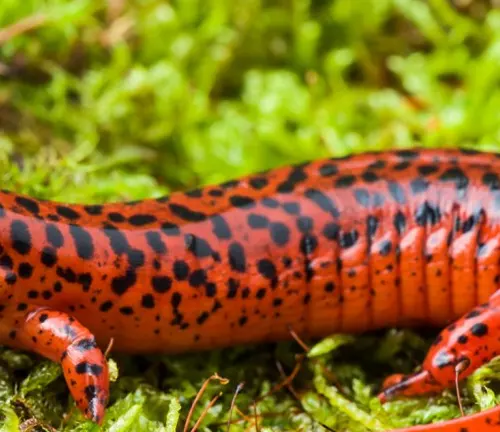
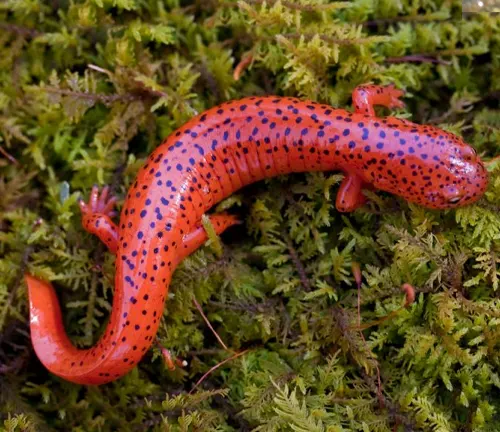
Body Shape
Red Salamanders have stout, cylindrical bodies complemented by a proportionally large head and a blunt snout. Their robust body structure supports their lifestyle both in water and on terrestrial grounds. The body shape is optimized for maneuvering through tight spaces under rocks and leaf litter.
Limb Structure
They possess four well-developed limbs, aiding in their mobility across varied terrains. Each front leg ends in four toes, while the rear legs have five toes, enhancing their grip and movement capabilities. This limb structure is indicative of their adaptability to both aquatic and terrestrial environments.
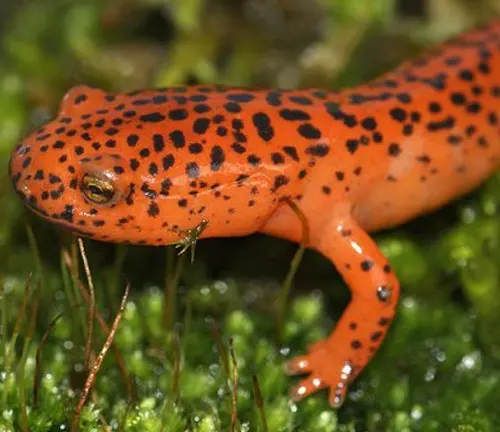
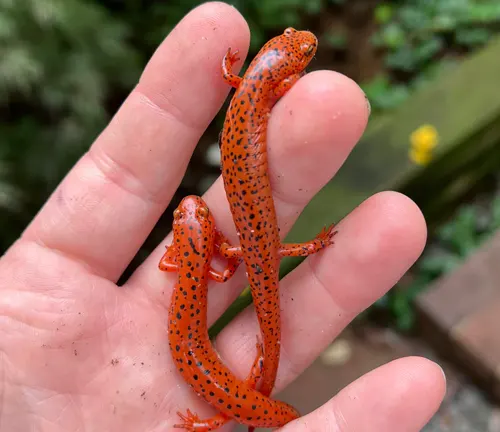
Size
With adults reaching lengths of 4 to 6 inches, they are among the larger salamander species in their range. This size allows for a more diverse diet and plays a role in predator deterrence. Their substantial size relative to other amphibians is notable during encounters in their natural habitats.
Biology and Identification
The Red Salamander is a medium to large-sized salamander, with adults typically reaching lengths of 4 to 6 inches. It boasts a vibrant red or reddish-orange coloration, speckled with irregular black spots that run down its back and sides, a distinctive feature that sets it apart from other salamanders. This vivid coloration not only makes the Red Salamander a striking figure in its habitat but also serves as a warning to potential predators about its mildly toxic skin secretions.
Unlike many amphibians, the Red Salamander does not undergo a complete metamorphosis. Instead, it hatches from the egg as a fully formed, albeit miniature, version of the adult, skipping the larval stage typical of other salamander species. This direct development is a unique aspect of its biology, allowing for a deeper understanding of salamander evolutionary adaptations.
Habitat and Distribution

The Red Salamander’s range extends from New York in the north, down the Appalachian Mountains, to Alabama in the south. It favors cool, clear, spring-fed streams and brooks in deciduous forests, often hiding under rocks, logs, or leaf litter. The quality of water and surrounding habitat is crucial for their survival, making them sensitive indicators of environmental health and water quality.
Behavior and Diet
Red Salamanders are carnivorous, feeding on a variety of invertebrates such as insects, spiders, and worms. Their hunting strategy is primarily ambush-based; they remain still and wait for prey to come within striking distance before capturing it with their quick, sticky tongue.
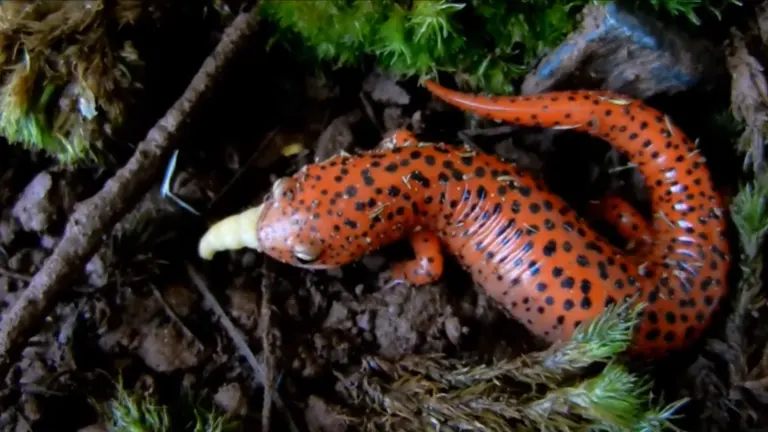
Socially, these salamanders are solitary, coming together only during the breeding season, which occurs in late autumn or early winter. Female Red Salamanders lay eggs in hidden, underwater locations, where they remain to guard them until they hatch. This parental care is relatively rare among amphibians and highlights the complexity of their behavior.
Ambush Predators
Red Salamanders employ a sit-and-wait strategy for hunting, remaining motionless until prey comes within reach, then quickly capturing it with their sticky tongues.
Nocturnal Activity
They are primarily nocturnal, being most active during the night when they hunt for food, although they can sometimes be found active during rainy or overcast days.
Solitary Nature
These salamanders are solitary outside of the breeding season, preferring to live alone. They can be territorial about their living space, especially in areas where food is abundant.
Moisture-Dependent
Red Salamanders require a moist environment to survive, as they breathe through their skin. They often stay near water sources and under moist leaf litter or logs to prevent dehydration.
Climatic Sensitivity
They are sensitive to changes in temperature and humidity, which can influence their behavior and activity levels. Extreme conditions may drive them to seek refuge in more suitable microhabitats.
Seasonal Behavior
Their activity levels and behaviors can change with the seasons. For example, breeding occurs in late autumn or early winter, and females exhibit parental care by guarding their eggs until they hatch.
Direct Development
Unlike many amphibians, Red Salamanders do not have a larval stage. Offspring are born as miniature adults, which influences their early behavior and survival strategies.
Conservation Status
Currently, the Red Salamander is classified as Least Concern by the International Union for Conservation of Nature (IUCN), indicating a stable population across its range. However, like many amphibians, it faces threats from habitat destruction, pollution, and climate change. The preservation of forested wetlands and clean waterways is essential for maintaining healthy populations.
Conservation efforts for the Red Salamander and its habitat include protecting wetlands, reducing pollution, and promoting sustainable land-use practices. Public education and awareness campaigns also play a crucial role in fostering appreciation and conservation actions for these vibrant creatures and their ecosystems.
Different Species of Red Salamander
Northern Red Salamander (P. r. ruber): This is the most common subspecies, characterized by its red or reddish-orange color with black spots. It is found from southern New York and Ohio to northeast Alabama and the Upper Peninsula of Michigan.
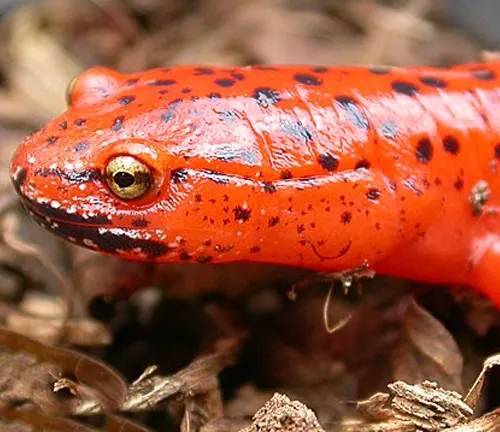
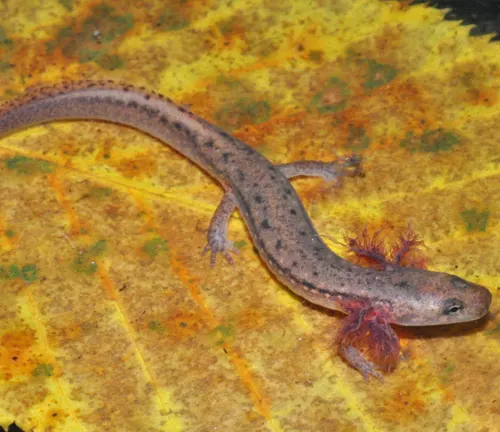
Blue Ridge Red Salamander (P. r. nitidus): Slightly smaller than the northern variety, this subspecies lacks black coloration on the tip of the tail and chin and is found at elevations of more than 5,000 feet in the southern part of the Blue Ridge Mountains of Virginia.
Conclusion
The Red Salamander is more than just a colorful inhabitant of eastern U.S. forests; it is a vital component of its ecosystem, a bioindicator of environmental health, and a subject of scientific interest. Through continued research and conservation efforts, we can ensure that this enchanting amphibian remains a flourishing part of our natural heritage for generations to come. Its story is a testament to the intricate connections within our ecosystems and the importance of every species within it.
Frequently Asked Questions (FAQs)
- What is a Red Salamander?
The Red Salamander is a species of salamander native to the eastern United States, known for its vibrant red or reddish-orange coloration with irregular black spots. It belongs to the family Plethodontidae, also known as lungless salamanders, relying on their skin and mouth linings for respiration. - Where can you find Red Salamanders?
Red Salamanders are found in moist, forested areas near cool, clear, spring-fed streams and brooks across the eastern United States. Their range extends from New York in the north, down the Appalachian Mountains, to Alabama in the south. - What do Red Salamanders eat?
They are carnivorous, primarily feeding on insects, spiders, worms, and other small invertebrates. Red Salamanders use a sit-and-wait strategy to ambush their prey, quickly capturing them with their sticky tongues. - How do Red Salamanders reproduce?
Red Salamanders breed in late autumn or early winter. Females lay eggs in hidden underwater locations and may display parental care by guarding the eggs until they hatch. They exhibit direct development, skipping the larval stage. - Are Red Salamanders poisonous?
Yes, Red Salamanders produce mild toxins in their skin, which can deter predators. However, they are not dangerous to humans unless ingested or if the toxins come into contact with mucous membranes or open wounds. - How long do Red Salamanders live?
In the wild, Red Salamanders can live for 10 to 15 years, and potentially longer in captivity. Their lifespan is influenced by factors such as habitat quality, predation, and disease. - What threats do Red Salamanders face?
They are sensitive to habitat destruction, pollution, and climate change. The preservation of clean waterways and forested wetlands is crucial for their survival. - What is the conservation status of Red Salamanders?
The Red Salamander is currently classified as Least Concern by the IUCN, indicating a stable population. However, local populations may be threatened by specific environmental challenges. - Can Red Salamanders be kept as pets?
While it is possible to keep Red Salamanders as pets, it requires a specialized environment that mimics their natural habitat, including cool temperatures and high humidity. It is important to source them responsibly to avoid impacting wild populations. - Why are Red Salamanders important?
Red Salamanders play a vital role in their ecosystems as both predators and prey. They help control insect populations and are indicators of environmental health due to their sensitivity to pollution and habitat changes.

Jack Williams
Forestry AuthorI'm Jack Williams, Jack Williams, my expertise in welding and generator technologies extends beyond traditional boundaries. With over 13 years of experience, I have honed my skills in a range of heavy-duty equipment, focusing particularly on welding and power generation. My passion for nature and commitment to ecological sustainability inform my approach to work. I emphasize safety, efficiency, and staying current with technological advancements. Beyond my technical skills, I am dedicated to sharing knowledge and fostering environmental awareness, aiming to contribute positively to both the welding and generator operation industries.

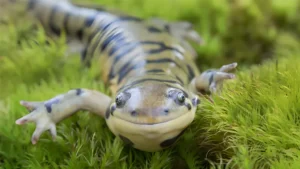
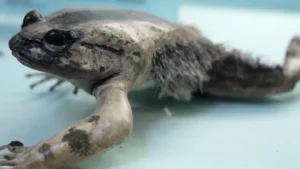


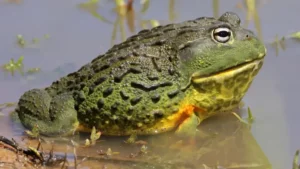

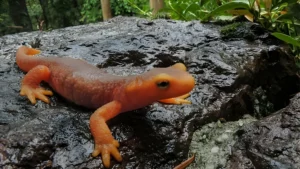
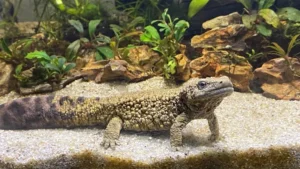
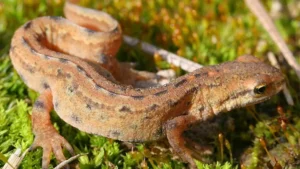
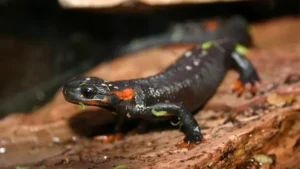
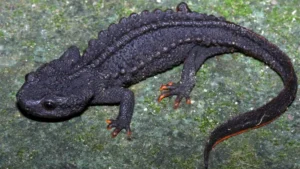
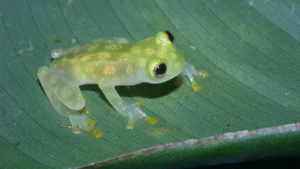
Leave your comment